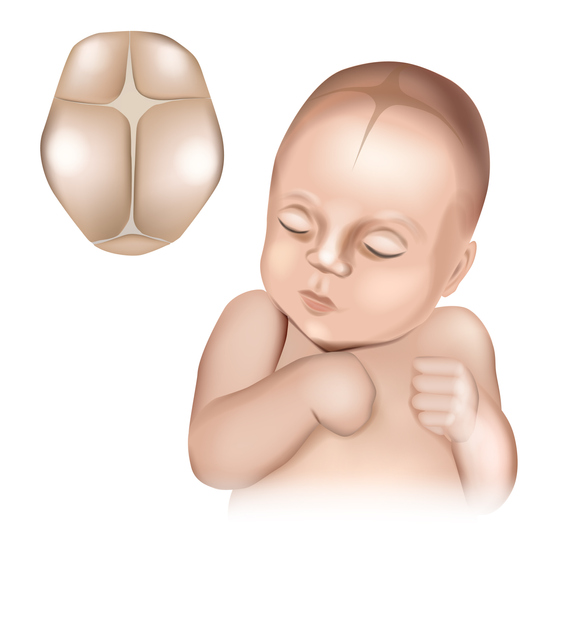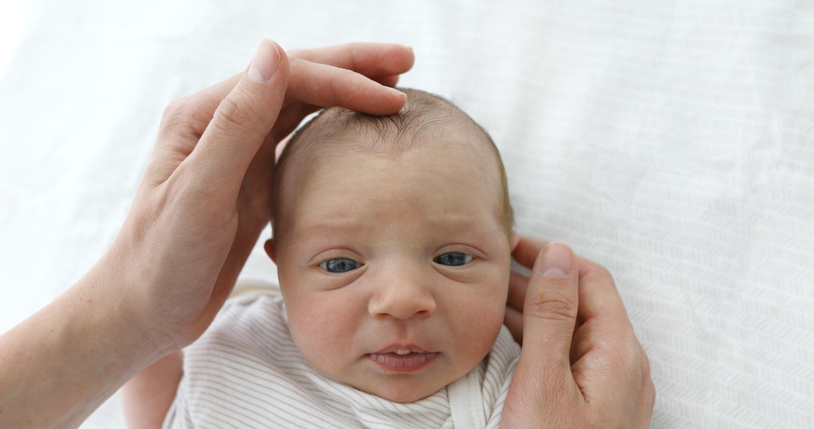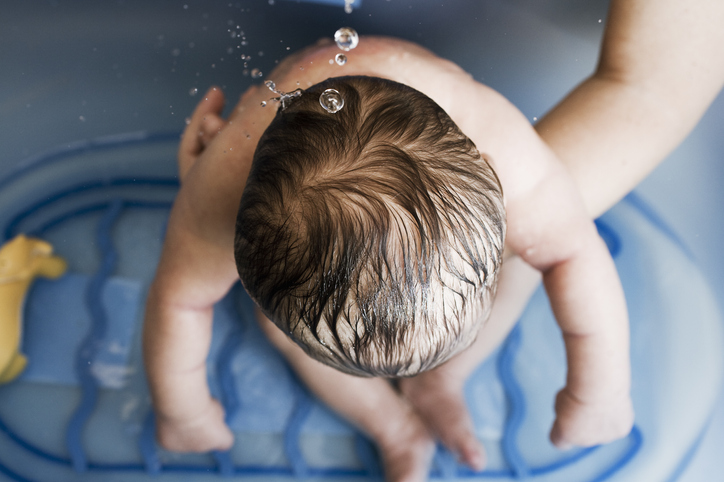A Guide to Your Baby’s Soft Spots

New parents have lots of things on their minds. Is the baby sleeping enough? Are they getting enough food? Are they growing at an appropriate rate? Added to their list is caring for their baby’s soft spots. These unformed areas on the front and back of the head serve an important purpose in birth and formation of a baby’s brain. But these areas are also delicate.
Types of Soft Spots
There are two soft spots, in the front and back of a baby’s head, and they will typically be closed within your little one’s first year of life. Until then, keep the area protected from injury. However, don’t be afraid to touch their head softly. Knowing what is normal versus what is a cause for concern in terms of your baby’s fontanelle can help ease your mind as you care for your new child.
What is the Soft Spot?

Baby’s fontanelles, commonly known as soft spots, are a gap in an infant’s skull. The anterior fontanelle is larger and at the front of the skull, while the posterior fontanelle is a smaller gap in the back. The area is layered with a thick fibrous material called cranial sutures. This keeps the bones of the skull connected. Soft spots give a newborn baby’s brain room to grow, in addition to allowing them to safely pass through the narrow birth canal during vaginal delivery. A baby’s development includes the closing of these areas, but until then, they provide the space for the baby’s head to grow.
Caring for Your Baby's Soft Spot

Since the areas of the fontanelles are not completely formed, it is crucial to protect your baby’s soft spot. While this responsibility may feel frightening as a first time parent, stroking your baby’s head gently is safe. But it’s important to baby proof your home and assure that your baby will not fall on their head, as an impact or puncture is dangerous. There are a number of baby proofing products that can help you with this.
If you have toddlers, try and explain to them that the new baby’s head is very precious, and that they must be careful not to press it. Show them how to gently stroke the baby’s head and then ask them if they want to give it a try. Make sure to keep your little one away from the baby when they’re engaging in types of play that involve harder objects!
The area of the soft spot also usually appears slightly sunken in. If you see your baby’s soft spot area pulsating, it may seem alarming, but this is just due to blood pulsing in your child’s brain in conjunction with the baby's heartbeat. The fontanel may also appear to be bulging if your child is crying or vomiting, but this should typically return to normal after your child has calmed down.
When Will the Soft Spots Close?

Since soft spots are temporarily incomplete parts of a baby’s skull, they will eventually close. The smaller fontanel in the back closes first, typically by the time your baby is 2 to 3 months of age. This one can sometimes already be closed when a baby is born. A baby’s larger front fontanel will meld together at about 18 months. Your pediatrician will examine the area at your baby’s regular checkups.
Baby Soft Spot Concerns
Though most of the time a baby’s fontanelles will not cause an issue, it’s important to be aware of certain problems. If you are worried, your pediatrician can help ease your worries or diagnose a medical condition or potential problem with your child’s health.
If your baby has a heavily sunken soft spot, it’s typically a sign of dehydration. Try to increase your baby’s fluids, but if they are not taking more in and the sunken fontanelle does not improve, and if your baby has a dry mouth and less wet diapers than normal for them, it’s best to reach out to a healthcare professional.
If your baby does fall and the soft spot looks swollen, it may be a sign of head trauma, and it is important to get immediate medical attention for your child.
Bulging fontanelles may have a ‘full’ appearance. It may be due to hydrocephalus, or fluid buildup in the brain. This can be an indicator of internal bleeding, an illness like meningitis, a tumor, or mass in the head.
Sometimes, the soft spot may seem to have closed early, but it can be a quiet fontanelle that is less obvious to detect. Occasionally, however, fontanelles can close too soon. Craniosynostosis occurs when skull bones close early on one side, and can cause abnormal head shape — typically longer and resembling a football. This can be treated with surgery or a helmet.
Genetic conditions can lead to fontanels that remain large or are still open after a baby’s first birthday. Sometimes, it can be a sign of congenital hypothyroidism or another genetic condition.
We know that caring for your newborn baby’s soft spot can feel overwhelming, but as long as you are gentle with your baby and baby proof your home, everything will be just fine. We’ve got lots more information about caring for your newborn to help you feel more at ease.

